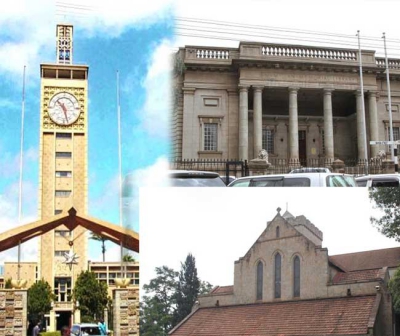
PERFECTO: Freemasonry is not a religion, but a Fraternal Order and early converts were gifted and took pride in grand, impeccable masonry work
Nairobi lacks distinct architecture. Little can distinguish our buildings, besides the current craze for height, aluminium cladding and glazing. Actually, the design of modern buildings is mostly of European import.
But one can’t miss the uniqueness of buildings that were erected by Freemasons who put up structures like the All Saint’s Cathedral at the turn of the last century.
They put up churches as well as colonial institutions and extensively incorporated Freemasonry signs and symbols even in Anglican churches.
Indeed, it was the Freemasons who defined Nairobi’s early architecture, building some of the grandest buildings in the country to date. Most are considered classics. Some are national monuments; giving the city a regal feel, reminiscent of Kenya’s imperial past.
Nairobi planning started in the 1920s. The government architect then was J.A Hoogterp, who later moved and settled in Johannesburg, South Africa. It was Sir Herbert Baker, a Freemason, who took charge of several projects after Hoogterp left. The layout of the city was borrowed from Washington DC, Paris, Cape Town, Pretoria, Canberra (the executive capital of Australia), New Delhi and La Plata, a city in Argentina.
All these cities’ architecture was widely deemed as masonic, complete with signs and symbols. It has also been observed that the major civic and central government buildings are designed to form an Ankh, (a cross having a loop for its upper vertical arm and serving especially in ancient Egypt as an emblem of life).
There is a masonic hand in the architecture of key buildings, especially those representing the political, economic, educational or religious powers of the city. Think Parliament, the All Saint’s Cathedral, McMillan Library, Kenya Railways headquarters and City Hall, all of which stand out for their impeccable and seamless masonry.
These masons were free to work anywhere, and they came to Kenya with their genius for bricklaying, stone carving and meticulous construction that is evident more than a century later. Here are some of the historic Freemason buildings that define Nairobi.
 The Standard Group Plc is a multi-media organization with investments in media
platforms spanning newspaper print
operations, television, radio broadcasting, digital and online services. The
Standard Group is recognized as a
leading multi-media house in Kenya with a key influence in matters of national and
international interest.
The Standard Group Plc is a multi-media organization with investments in media
platforms spanning newspaper print
operations, television, radio broadcasting, digital and online services. The
Standard Group is recognized as a
leading multi-media house in Kenya with a key influence in matters of national and
international interest.

